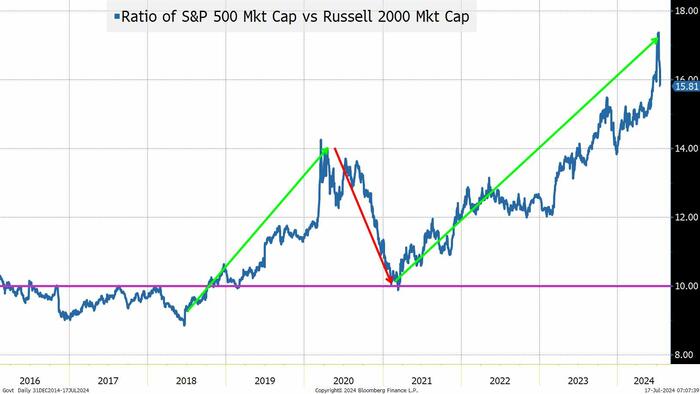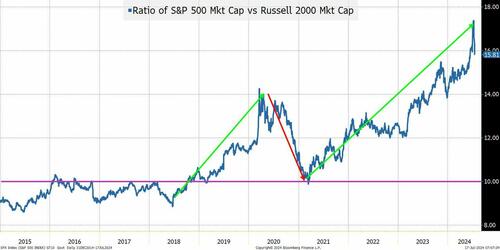


By Peter Tchir of Academy Securities
Three quick things to think about today.
Markets are reacting to concerns that the U.S. may adopt harsher restrictions on Chinese trade and the semiconductor industry.
We have been arguing that semiconductors are firmly entrenched in the national security mindset. The development and production of chips are major concerns at the national security level. While much of the focus has been on high tech and future tech, the concern has been expanding. “Dual Use” chips and technology is increasingly in the crosshairs of the national security community. Technology that may have mundane uses, is also showing up in less mundane things – from targeting systems to drones.
Expect two things:
Expect a choppy ride, and don’t expect much to change after the election.
There are many ways to look at stock market indices. We focused on equal weight indices and concentration in Breadth & Liquidity. Rarely do we think of indices in terms of market capitalization. Individual companies, yes, but indices, no? What stuck me as “odd” or “interesting” is that as of last Friday, the market cap of the Russell 2000 was less than $3 trillion. Yes, the S&P 500 is meant to pick up at least 80% of the market cap of U.S. stocks, but it has grown to closer to 90%. Yes, there is a “survivorship” bias in the Russell 2000 that keeps the market cap smaller (companies that grow eventually get “promoted” out of the index. So there are many reasons to not think about market cap, but it also seems odd that you can pick up 2000 or so companies, for the price of just a few (or even one) company. Since getting “ratioed” on twitter (now X) is a bad thing, maybe it is in markets as well?
Not a chart we’ve ever looked at before, and not sure how useful it is (given what the indices are meant to represent), but it also reminds me of a “roulette” table. How many people bet all their money on one or two numbers? People spread their bets, they bet “red or black” or other low payout bets. From a simple “liquidity” standpoint, it doesn’t take much to move any individual stock in the Russell 2000 (they are small). Add to that, the view that many of these stocks are underowned, and it really doesn’t take much of a flow to move the needle.
Maybe saying that for most of the past 10 years, you could get 10 Russell 2000’s for every one S&P 500, and now it is 16 is silly? But this is a country that loves sales, so maybe it isn’t? The combination of underperformance, low liquidity, especially in the summer, and underinvestment could be a powerful combination for small cap outperformance! (as of this weekend’s report, the smallest 250 companies in the S&P 500 had an average year to date return of 0%!)

